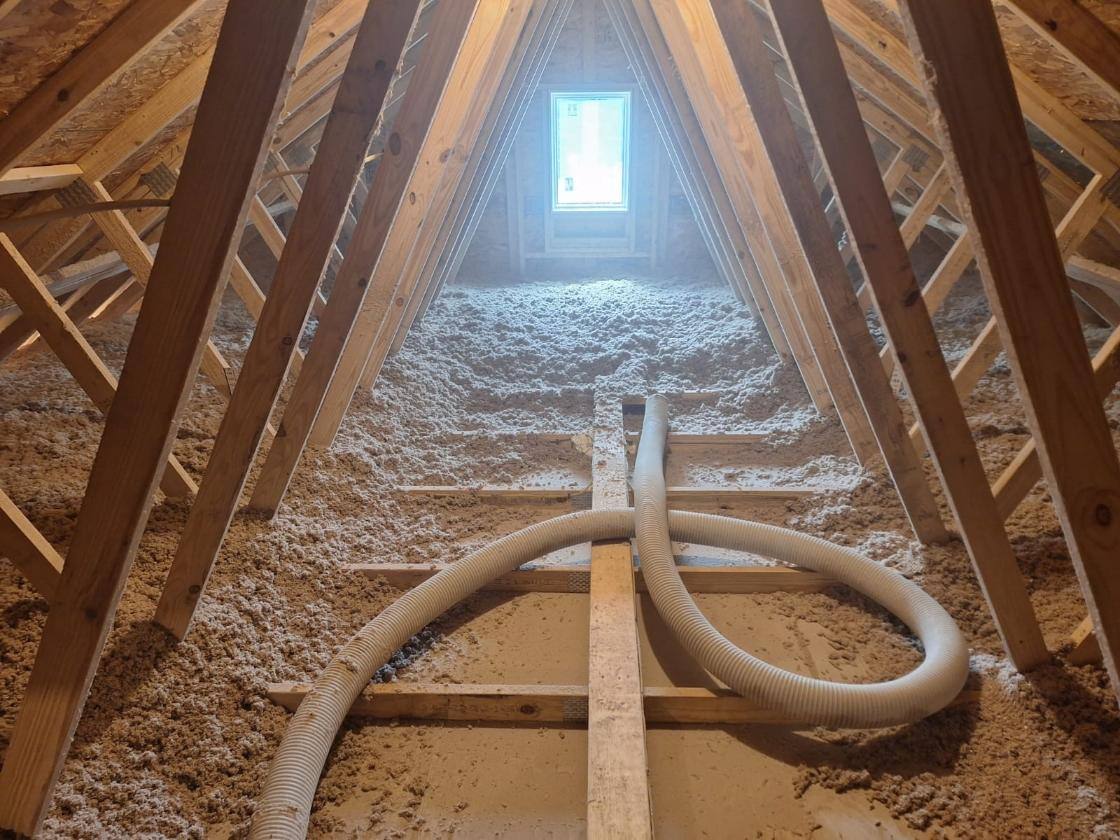Is Blown-In Insulation Cheaper Than Batts?
November 29th, 2024
3 min read

You want to find the least expensive options when you're on a tight budget. If you're lucky, you might be able to find a deal and get a great product for less. You know you need insulation, but you aren't sure which option is most budget-friendly. Can you save money by installing blown-in instead of batts?
South Central Services has insulated hundreds of new and existing homes around Gettysburg, PA. We install both blown-in cellulose and fiberglass batt insulation. While the prices of these products fluctuate a bit, both are considered a budget-friendly option. Which will be the most affordable for you depends on your project.
By the end of this article, you will understand:
- Why blown-in and batt are generally considered budget-friendly
- Which types of blown-in and batt are more affordable
- What type of insulation you prefer for your project
Don't have time to read right now? Check out everything you need to know at a glance.
Both Blown-In And Batt Are Considered Budget-Friendly Options.
Batt and blown-in insulation are both known for being more economic insulation options. Blown-in and batt are much more affordable than premium options like spray foam.

Both insulations can be installed as a DIY to help cut costs even further. These products are also entirely manufactured before they are sold. If you purchase some batts at your local hardware store, you only need to cut them to size and install them. Blown-in insulation will require a machine rental for installation, but the insulation itself is ready.
Insulation Material Influences Insulation Cost.
Another reason batt and blown-in are so affordable is their type of material. Batt insulation usually refers to fiberglass. However, batt can also be made of other materials. Blown-in insulation, as well, is a general term for several types of insulation.
Let's examine the budget-friendliness of the most common types of batt and blown-in.
Fiberglass Batt Insulation Is An Economic Choice.
Fiberglass insulation has been around for decades and is quite affordable. Fiberglass is composed of fine glass and plastic fibers. Often, fiberglass batts are partially made up of recycled content.

Of all the insulation products on the market, fiberglass batts are one of the most inexpensive.
Rockwool Batt Insulation Is Expensive.
Another type of batt insulation is rockwool. Rockwool is a newer technology than fiberglass. Rockwool insulation is actually made of rocks. Rock-based mineral fibers are also recycled materials, like slag. However, rockwool is more expensive to manufacture.
Rockwool is also a more effective type of batt insulation. Rockwool offers better insulation performance than fiberglass, so it tends to be much more expensive. Rockwool batts exist in a similar category as spray foam when it comes to price.
Blown-In Fiberglass And Cellulose Have Similar Price Points.
Blown-in insulation usually refers to either fiberglass or cellulose. Like fiberglass batts, blown-in fiberglass has recycled content made up of tiny glass fibers. Instead of being formed into pre-cut batt shapes, blown-in is a loose-fill version of the same product.

Blown-in cellulose is made of paper and recycled paper content. At South Central Services, we install Nu-Wool cellulose, made of 86% recycled material.
The price of cellulose has fluctuated over time. When the insulation was first introduced, it was especially affordable due to the availability of print materials for recycling. With the takeover of digital media, cellulose materials are less readily available for recycling.

Both insulation materials' prices fluctuate, but they usually have similar price points.
Generally, Batt Insulation Is Less Expensive Than Blown-In.
When it comes to batts, fiberglass is more affordable than blown-in insulations. The margin, however, is narrow.
At South Central Services, we charge between $0.75 and $3.00 per square foot for fiberglass batt insulation. For blown-in cellulose, we charge between $1.50 and $4.00 per square foot.

Since Both Are Budget-Friendly, Choose Your Insulation By Performance.
If both insulations are within your budget, we recommend selecting your insulation based on your goals.
Attics can be insulated with batt or blown-in, but our preference is blown-in with an airtight seal for performance. Nu-Wool cellulose offers an R-value of R-3.8 per inch. While the blown-in application cannot air-seal, the product can be paired with air-sealing measures.

When it comes to other areas of the home, such as walls or ceilings, batt insulation is the better budget option. Blown-in can only be installed on the attic floor, which means fiberglass batt insulation wins by default. Another cellulose option for walls or ceilings is dense pack cellulose.
If your goal is to lower your energy bills or make your home more comfortable, contact a qualified insulation contractor. These professionals can walk through your options and explain how best to reach your goals.
Budget-friendly insulations will make less of an impact on energy costs or comfort, but there are ways to maximize their performance and your investment.
The Bottom Line About Blown-In And Batt Insulation Prices
Both batt and blown-in insulation are known as being budget-friendly. As long as the material is fiberglass or cellulose, these insulation types are usually more affordable.
Batt insulation is usually the most affordable insulation option, and it also has more versatility. Blown-in insulation, especially when paired with an airtight seal, can deliver better performance than batts in the attic.
Now that you understand why batt insulation is usually more economical than blown-in, your next step is to:
- Estimate the cost of blown-in for your attic
- Weigh the pros and cons of fiberglass batts
- Discover if you can save money with DIY spray foam
Disclaimer: While we strive to publish information accurate to building science, local building codes and standards supersede our recommendations.
Alexis has been fascinated by spray foam insulation since 2018. When she isn’t thinking about insulation, Alexis is geeking out over storytelling and spreadsheets.
Topics:


